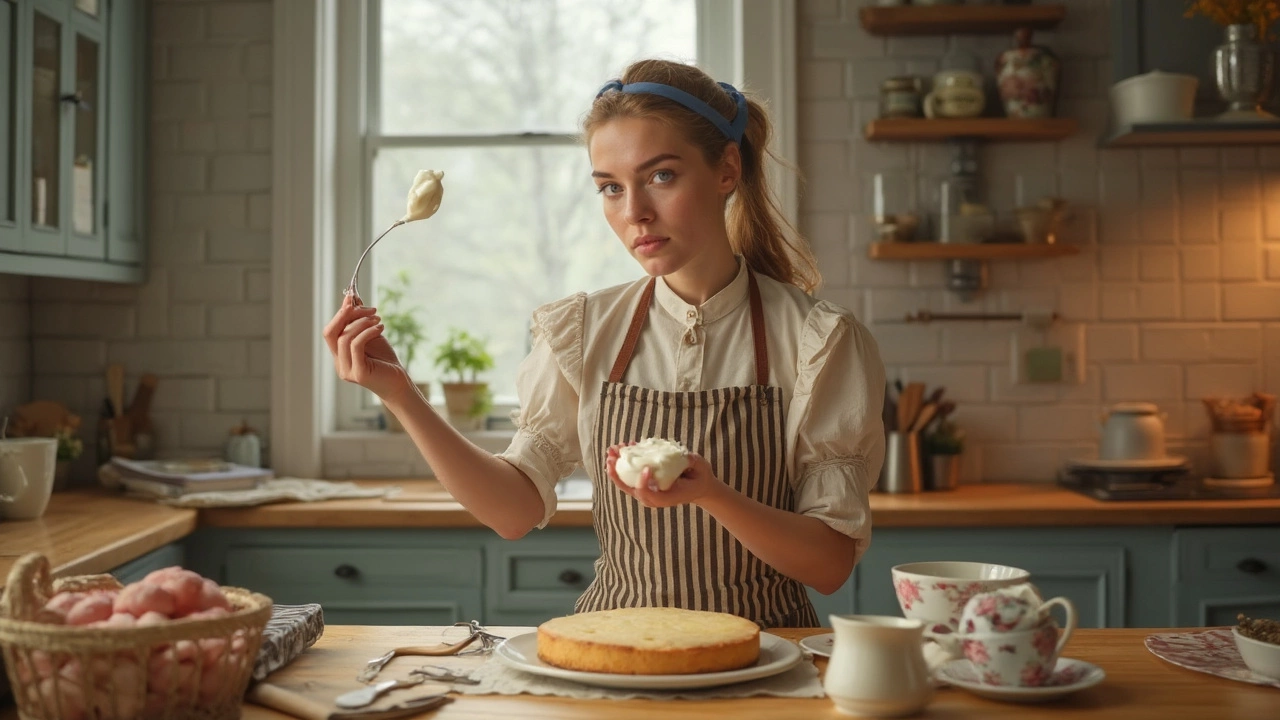
Accidentally dumped an extra scoop of sour cream into your cheesecake batter? You're not alone. That tub can be sneaky, and before you know it, your batter looks a bit runnier than usual. Knowing what sour cream actually does in a cheesecake is the secret to catching these oops moments—because it’s not just about creaminess.
Sour cream is there for a reason. It gives your cheesecake that silky smooth texture, adds a little tang, and keeps it from tasting like straight-up sweet cream cheese. Still, if you add too much, it totally changes how your cheesecake sets up and tastes after baking. Stick around, and you'll see how to spot and fix the sour cream slip-up before your cake comes out of the oven looking like a soggy mess.
- Why Sour Cream in Cheesecake?
- The Effects of Too Much Sour Cream
- Texture Changes and How to Spot Them
- Flavor: Creamy or Overwhelming?
- Can You Fix a Sour Cream Overload?
- How to Nail the Perfect Ratio Every Time
Why Sour Cream in Cheesecake?
Sour cream isn't just a random add-in for cheesecake—it’s actually a pro move. The real point of sour cream is to balance the flavor and boost the texture. Cream cheese by itself can make a cheesecake that’s stiff or almost rubbery. But once you whisk in sour cream, suddenly you get that velvety texture everyone loves.
Another job sour cream does? It brings some tang to the party. If you've ever had cheesecake that tastes bland or one-note, there's a good chance it was missing sour cream. That bit of acidity keeps the dessert from tasting too cloying or rich.
Ever notice how smooth a classic New York-style cheesecake is? That’s usually thanks to sour cream or something similar (like Greek yogurt for folks who want to mix it up). But honestly, sour cream is the OG. Why? Here’s a quick comparison:
| Ingredient | Effect on Cheesecake |
|---|---|
| Cream Cheese Only | Dense, can be heavy |
| With Sour Cream | Silkier, lighter, more balanced flavor |
| No Acid (e.g., whipped cream instead) | Rich, but often flat or overly sweet |
Sour cream also helps the cake set just right. It keeps the texture creamy even after chilling overnight. That matters if you're after a dessert that actually feels good on the fork, not just looks pretty in photos.
- Cheesecake made with sour cream stays moist longer—so leftovers won’t taste like cardboard.
- It can help fix grainy batter since the fat blends out lumps.
- Sour cream gives you more control on the overall sweetness because it cuts through sugary bits.
So yeah, sour cream isn’t just a sidekick here. It’s the thing that bridges creamy, tangy, and oh-so-perfect in a cheesecake.
The Effects of Too Much Sour Cream
Too much sour cream in your cheesecake might sound harmless, but it’s actually a game changer. First off, adding even an extra half cup can mess with the structure of the batter. Your cheesecake might not firm up like you want, and you’ll end up with a super soft, almost custard-like center that can’t quite hold a clean slice. Nobody likes scooping their cheesecake with a spoon (unless you’re into that sort of thing).
Let’s talk about water content. Sour cream has a lot more moisture than cream cheese. When you overdo it, you’re pouring in extra liquid that throws off the balance of your batter. That extra moisture can cause your cheesecake to crack as it cools, or it might even separate, leaving weird wet spots in the cake. The crust? It might turn soggy, especially near the edges, because that water seeps down while baking.
There’s also a shift in flavor. A little sour cream turns up the tang and makes things taste richer. But dump in too much, and your cheesecake loses its classic mild sweet profile. The tanginess can start to overpower everything else and sometimes leave a weird aftertaste that lingers longer than you want.
You’re probably wondering what happens to the bake time. With all the extra liquid, your cake takes longer to set—sometimes up to 30 minutes more! And when you push the bake time, you risk a browned or rubbery top because the surface starts to dry out before the inside sets. That’s a one-way ticket to an overbaked cheesecake nightmare.
Here’s a simple table to break down what actually changes when sour cream goes overboard:
| Cheesecake Element | Normal Amount | Too Much Sour Cream |
|---|---|---|
| Texture | Smooth & creamy, holds slice | Loose, wobbly, can fall apart |
| Flavor | Balanced, mild tang | Overly tangy, sometimes sour |
| Moisture | Set but creamy | Wet crumbs, possible soggy crust |
| Bake Time | Standard (about 1 hr) | Longer, can overbake top |
The fix? Don’t eyeball it. Stick to recipes that call for the amount of sour cream you really need. Most American-style cheesecakes go for about 1 cup per 2-3 packages (16-24 oz) of cream cheese. Less is actually more when it comes to getting that perfect, sliceable cheesecake texture. If you want your cheesecake to come out of the oven looking and tasting right, keep sour cream in check.
Texture Changes and How to Spot Them
Adding too much sour cream to your cheesecake batter might sound harmless, but it actually messes with the texture more than a lot of people expect. The right amount makes your cake creamy and smooth, but go overboard and things get weird—fast.
So, what should the texture look and feel like? When your ratio is spot-on, you get a clean slice, velvety bite, and a cake that holds up on a fork. Too much sour cream, and you’ll notice these changes:
- Sogginess: A cheesecake with too much added moisture won’t set firmly. When you cut into it, the slice can slump and lose its shape.
- Grittiness: Strangely enough, excess sour cream can make a cheesecake look creamy but taste grainy, especially after it’s chilled.
- Loose or runny center: The middle of the cake may stay jiggly, or even seem raw, no matter how long you chill it.
Keep your eyes peeled for these texture issues when baking or serving:
- Surface cracks: Too much sour cream means extra moisture expanding during baking, making cracks more likely.
- Water pooling: Notice liquid pooling along the edges or on the plate? That’s a sign of too much sour cream or overbaking.
For a quick snapshot, here’s how a typical cheesecake stacks up on key texture points versus one that goes heavy on sour cream:
| Texture | Perfect Ratio | Too Much Sour Cream |
|---|---|---|
| Firmness | Holds shape, can slice cleanly | Soft, often collapses when cut |
| Consistency | Smooth and dense | Loose, sometimes seems underbaked |
| Appearance | Even, slightly matte surface | May crack, look shiny or wet |
If you sneak a taste and it feels almost mousse-like instead of classic thick cheesecake texture, that’s a dead giveaway you’ve tipped the sour cream scale. Keeping your measurements accurate is everything if you want that traditional New York cheesecake finish.
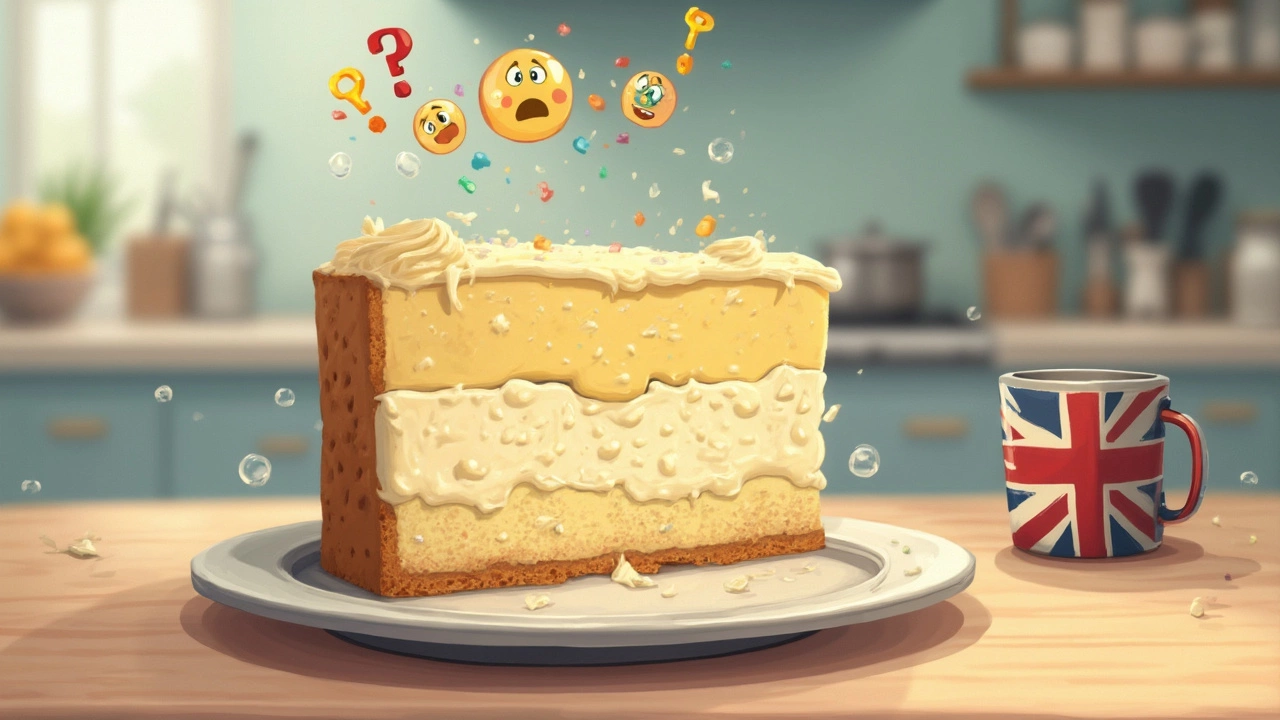
Flavor: Creamy or Overwhelming?
Too much sour cream means your cheesecake can taste more sour and tangy than you probably bargained for. Sour cream usually adds a small bump of tartness, but double or triple the amount and you might end up reminding people of sour candy, not classic cheesecake. It's a totally different vibe—even if you love tangy desserts.
You can spot it right away: cheesecakes with a heavy hand of sour cream lose that subtle balance. The usual cream cheese flavor gets pushed to the side, and the tang takes over. People who’ve accidentally done this say it’s sort of like eating sweetened sour cream with a crust. That’s not what you want when you’ve spent all that time mixing and baking.
It’s not just about flavor, either. The way you taste sweetness and tang actually changes with each spoonful. Research from food scientists shows our taste buds get fatigued by strong sour notes, which dulls other flavors faster. Too much tang can even cover up sweet or vanilla notes you worked into your recipe.
Cheesecakes get their typical taste by striking the right balance between cream cheese, sugar, and sour cream. Here’s a quick look at what happens when things get out of whack:
| Ratio (Cream Cheese : Sour Cream) | Resulting Flavor |
|---|---|
| 4:1 (standard) | Classic, mildly tangy with creamy richness |
| 2:1 | Tangier, but still well-balanced |
| 1:1 | Tang dominates, cream cheese flavor fades |
So what’s the bottom line? For the best cheesecake experience, less is more with sour cream. It’s there to support the cream cheese, not take over. If your friends are missing that sweet, creamy comfort, and they’re puckering up instead, you’ll know you tipped the scales with too much sour cream.
Can You Fix a Sour Cream Overload?
It happens: you grab the sour cream, measure it with a generous hand, and suddenly your cheesecake mix looks more like pancake batter. Don’t panic! While you can’t scoop the extra out, you can save your cheesecake most of the time with a few simple tricks.
If your batter is overly runny, first check how much over your original recipe you are. One or two extra tablespoons won't hurt much, but an extra half-cup (or more) will mess with the structure and flavor. Here’s what you can do if you’ve overdone it:
- Add more cream cheese: If your batter can handle a bit more bulk, toss in extra cream cheese. Go for 2-4 ounces per extra 1/4 cup of sour cream. This helps thicken things up.
- Mix in cornstarch: A tablespoon or two of cornstarch (depending on the extra liquid) will help set your batter. Don’t go overboard, or you’ll get a gummy texture.
- Check the bake time: Too much sour cream means your cheesecake will take longer in the oven. Start by adding 10-15 extra minutes, then do the jiggle test in the center – it should barely wobble.
- Sift in a little flour: This is a backup if you’re out of cornstarch. Use about a tablespoon. Again, not too much, or your cheesecake will taste more like cake than cream.
If you’re worried about flavor, taste the batter before baking. You can add a tad more sugar or a squeeze of lemon juice to balance extra tang. Some folks also like to whip in a dash of vanilla extract for extra richness.
Curious how much is too much? Here’s a quick look at what happens when you go overboard:
| Extra Sour Cream | Cheesecake Texture | Flavor Change |
|---|---|---|
| 1-2 tbsp | Still creamy | Slightly tangy |
| 1/4 cup | Softer, less firm | Tangier, creamier |
| 1/2 cup+ | Loose, runny, may not set | Overpowering tang, less sweet |
Bottom line: most of the time, you can patch things up and no one will even know you slipped. Just remember, when it comes to cheesecake, sometimes less is more.
How to Nail the Perfect Ratio Every Time
Getting the sour cream ratio right is what separates a dreamy cheesecake from one that flops on the first slice. There’s a pretty universal rule: use 1 cup of sour cream for every 24 ounces (about 680 grams) of cream cheese. That’s what you’ll see in most classic New York–style recipes and for good reason—it’s been tried and tested in home kitchens and bakeries everywhere.
You want enough sour cream for that signature silky finish, but not so much that your dessert turns wobbly or weepy. The ratio makes sure your cheesecake sets up firm but creamy, with just enough tang to balance out the sweetness. If you make a standard 9-inch cheesecake, follow these numbers and you’ll hit the target every time.
| Ingredient | Standard Amount | Notes |
|---|---|---|
| Cream Cheese | 24 oz (3 packs, 8 oz each) | Room temp, full fat |
| Sour Cream | 1 cup | Full fat, not light |
| Sugar | 1 cup | Granulated |
| Eggs | 3 large | Room temp |
If you want to tweak for more tang or richer texture, don’t go wild—stick to about 1/2 cup extra sour cream if you’re feeling brave, but any more and you risk a loose (or soggy) cake. If you’re scaling up or down in size, just keep the ratio the same: for every 8 ounces of cream cheese, use about 1/3 cup of sour cream.
- Measure the sour cream with a dry measuring cup—liquid ones aren’t accurate for thick stuff.
- Bring both the cream cheese and sour cream to room temperature so they mix smoothly. Lumps can throw off your texture.
- Always mix on low speed and scrape the bowl, so everything’s blended but not overwhipped. Too much air = cracks and collapse.
Extra tip: If you’re out of sour cream, Greek yogurt works almost the same. Just stick to the same measurements and go for plain, full-fat yogurt so your balance and texture stay on point.



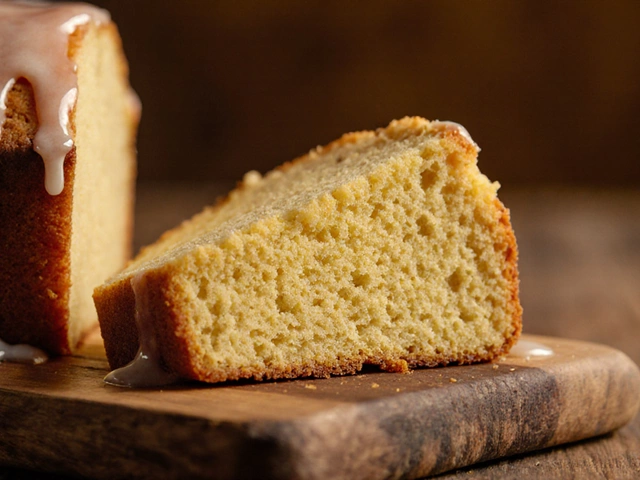
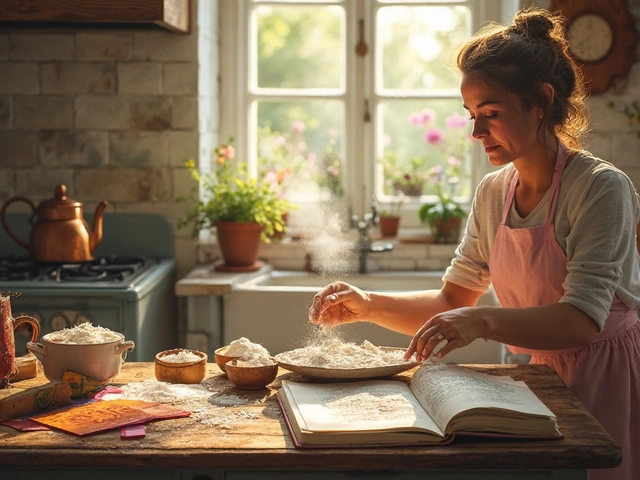
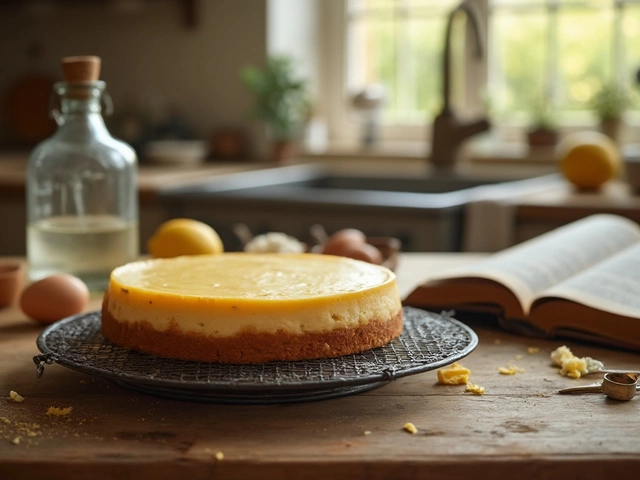
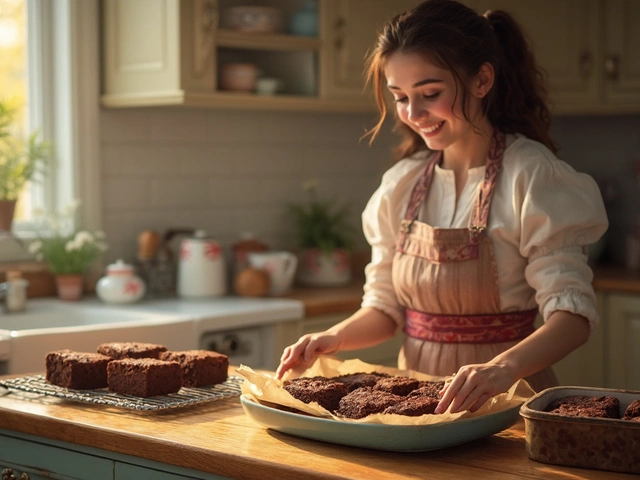


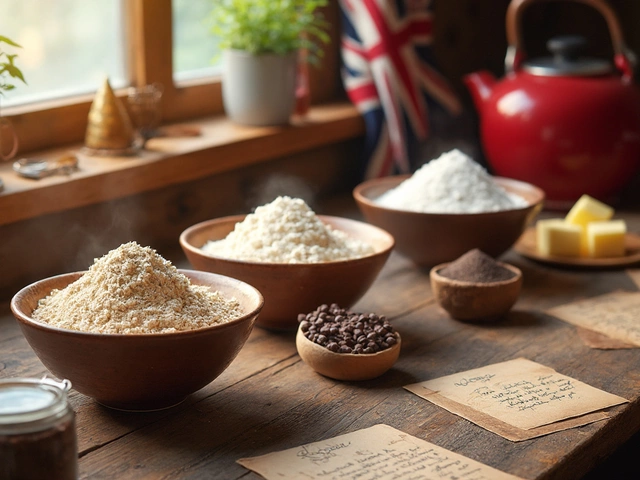

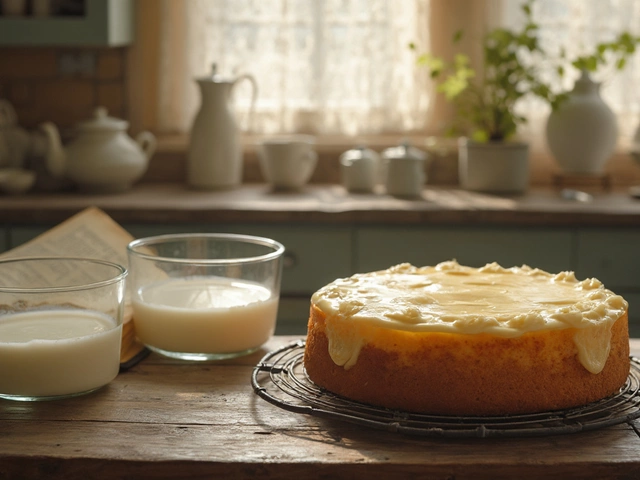
Write a comment